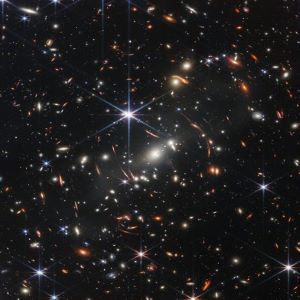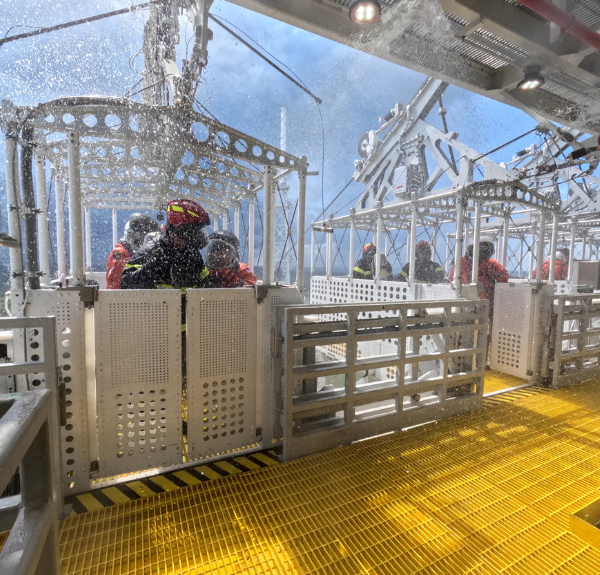The James Webb Space Telescope is the most powerful and complex space telescope ever built — and one of NASA’s Agency Priority Goals (APGs).
An APG is a two-year goal set by the agency that allows its leaders to establish priorities, set outcomes, and measure results. APGs bring focus to certain areas where agencies want to drive significant progress and change. For NASA’s APG, that meant the launch, deployment, and use of the Webb Telescope for its first cycle of scientific observations.
The Webb Telescope first received APG designation in 2014. Its development and launch after multiple two-year goal cycles and administrations shows the power of continued prioritization efforts made possible by the APG designation.
With the most recent release of APG updates and the first birthday of the telescope, NASA has made major progress towards each of those goals.
To understand why NASA set those goals, and how they’ve accomplished some of them, we sat down with Dr. Eric Smith, program scientist for the Webb Telescope at NASA Headquarters and APG goal leader to learn more about what the Webb has helped us discover so far, and what new breakthroughs might lie in store for the future.
The Webb’s First Birthday
On Christmas Day 2021, an Arianespace Ariane 5 rocket launched from the Guiana Space Center in French Guiana carrying the Webb Telescope. But why on Christmas? Was that date chosen for a reason? Here’s Dr. Smith breaking down the story behind the launch:
Its journey, however, started long before then. Proposals for a follow-up to the Hubble Space Telescope began circulating after its launch in 1990. In 2002, after years of internal planning, the proposal was formalized with a new name: the James Webb Space Telescope, after the NASA administrator who led the agency during the Apollo program.
While the COVID-19 pandemic paused launch opportunities, a majority of the work on the telescope had already been completed. Some assembly work still remained — but that was done in a clean room that required sterilization before entry. While it took longer for the engineers to get in and out of the room one at a time, work could still progress despite COVID, and the telescope was prepared to launch on Christmas Day 2021.
Here’s Dr. Smith talking about how COVID impacted the preparations for launch:
Dr. Eric Smith Webb Telescope Interview — Impact of COVID from Shared Solutions & Performance on Vimeo.
After the telescope’s successful launch, Webb operators steered it into its orbit around the Sun, and deployed its solar array, antenna, sunshield, and mirrors. Following this, its mirrors were calibrated, and test images were taken. The first goal strategy outlined as part of the APG was complete.
After two decades of work, the first stunning images were released to the public on July 11, 2022. Research has been ongoing since then, with each week bringing new discoveries.

Check out the NASA Webb Telescope Flickr album for a full set of released images.
What Has the Webb Telescope Told Us in Its First Year?
Since the release of the first public image on July 11, 2022, the telescope has captured a large amount of data, which scientists worldwide are examining. Here’s Dr. Smith, in his own words discussing the most exciting discoveries made so far:
Dr. Eric Smith Webb Telescope — Exciting Discoveries to Date from Shared Solutions & Performance on Vimeo.
What New Discoveries Does the Webb Telescope Have in Store for Us?
The telescope has enough fuel onboard to operate for at least 20 years, during which astronomers, physicists, and other scientists will submit proposals for research. Listen to Dr. Smith explain how proposals are selected:
Dr. Eric Smith Webb Telescope Interview — Observation Target Selection from Shared Solutions & Performance on Vimeo.
As part of the Webb APG, NASA plans to complete the review of its second round of proposals, and begin Webb’s second cycle of observations by July 1 of this year. So what will those projects discover? Learn what Dr. Smith is most excited to see in the future from the Webb Telescope:
Dr. Eric Smith Webb Telescope Interview — Future Discoveries from Shared Solutions & Performance on Vimeo.
Be sure to follow the Webb Telescope’s Twitter and Instagram accounts to stay up-to-date with its latest discoveries.
Stay Informed
We invite you to follow along with us on Performance.gov, which will be updated quarterly with progress on agency and PMA priorities and strategies. For further information, we encourage you to follow our Twitter and LinkedIn, and to subscribe to our newsletter to receive updates in your inbox.




